Certainly, here's a list of important WordPress-related terms and definitions that users should be familiar with:
- WordPress: An open-source content management system (CMS) that allows users to create and manage websites, blogs, and online applications.
- Theme: A collection of files that define the visual appearance and layout of a WordPress website. Themes can be customized to change the look and feel of the site.
- Plugin: A piece of software that extends the functionality of a WordPress website. Plugins can add features such as contact forms, SEO optimization, social media integration, and more.
- Dashboard: The backend interface of a WordPress site where users can manage content, settings, and various aspects of the site.
- Post: A type of content in WordPress typically used for blog entries. Posts are displayed in reverse chronological order on the website.
- Page: A static content type in WordPress used for creating non-blog pages like about, contact, and services pages.
- Widget: A small block that performs a specific function and can be placed in predefined areas of a WordPress site, such as the sidebar or footer.
- Menu: A navigational structure that helps users navigate the various sections of a WordPress site. Menus are usually displayed in the header area.
- Permalink: A permanent link structure that defines the URL format of individual posts and pages on a WordPress site.
- Featured Image: An image set to represent a specific post or page, often used as a thumbnail or header image.
- Editor: The tool used to create and edit content in WordPress. There are two main editors: the Visual Editor (WYSIWYG) and the Text Editor (HTML).
- Shortcode: A small piece of code that allows users to embed dynamic content or features into posts, pages, or widgets without needing to write complex code.
- SEO: Search Engine Optimization. Techniques and strategies to improve a website's visibility in search engine results, driving organic (non-paid) traffic.
- Responsive Design: A design approach that ensures a website's layout and content adapt and display properly across various screen sizes and devices.
- Cache: Temporary storage of web pages and assets to speed up page loading times and improve site performance.
- Backup: A copy of a website's files and database that can be restored in case of data loss or website issues.
- Domain: The web address used to access a website. It's the URL that users type into their browsers to visit a specific site.
- Hosting: The service that stores a website's files, databases, and content on a server and makes them accessible over the internet.
- SSL: Secure Sockets Layer. A security technology that establishes an encrypted link between a web server and a browser, ensuring data privacy.
- Gutenberg: The new WordPress block editor introduced in WordPress 5.0, allowing users to create content using a block-based approach.
- USER: You can see your user information, update password etc.
Understanding these terms will help WordPress users navigate the platform more effectively and make informed decisions about their websites.

